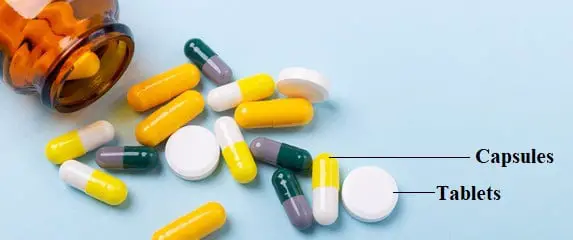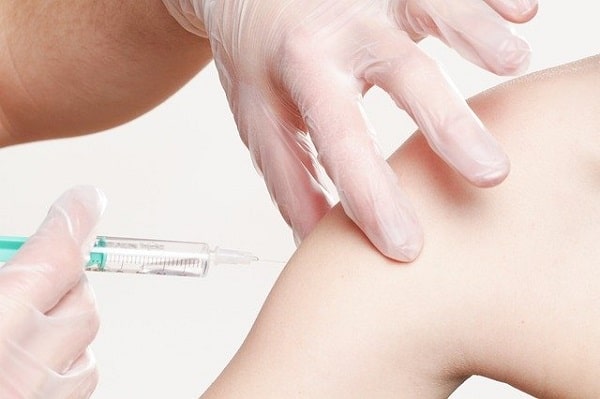When we visit a doctor for any disease condition, we are prescribed a few medicines that are to be taken by specific routes. These routes include
- Oral route
- Topical route (skin, eyes, ears)
- Inhalation route
- Parenteral route (injections)
- Vaginal route
- Anal route.
- Sub-lingual route.
These routes are called routes of medication administration.
You might have mostly got tablets to consume, but at times, even syrups, ointments, and even injections are given. You can also read the types of dosage forms for more.
Some are taken by mouth (orally), some by skin application (ointment), and others by body muscles (injections). But why do doctors need this many routes of medication administration?
This is quite interesting and is studied as part of the pharmacology course in medicine.
Routes of medication administration
Oral route ( also called peroral)
In this route, as the name indicates, the drug is taken by mouth. It is safer and also inexpensive. It is the most common route of taking drugs.
Dosage forms like tablets, capsules, syrups, suspensions and emulsions are taken by this route.

This route is preferred due to advantages like
a. Ease of administration as even the patient can take medicine on his own without others’ help.
b. The chances of taking an improper dose are absent.
c. This is a non-painful route and also the safest route.
d. Also, dosing by this route allows no wastage of drugs.
d. It is suitable for people of all ages, including infants, children, adults, and old age people.
But it also has a few limitations, like
a. It is not possible to give drugs in this route to patients who are not awake or conscious.
b. This route is not suitable for all the drugs. This is because there are chances of degradation of drugs in the liver before reaching the blood. Hence, it cannot show a therapeutic effect.
c. In case of emergency, this route is not preferred as the time taken by medicament given by this route to produce an effect is half an hour to one hour. That is, there is no immediate response.
For example, Tablets, syrups, and capsules are given by this route.
Topical route
This route is where the medicament is applied to the skin to produce its effects. This route is one of the safest routes as the drug cannot produce adverse effects as it does not reach the systemic circulation (blood in the body).
In this method of administration, the drug is applied to the skin, mucus, or any other body surface.
Advantages:
a) It can show local effects. I.e., the drug acts only at the site of application and not on the whole body, like in the oral route.
Ex: Powders, ointments, lotions, etc.
Inhalation route
Here, drugs are given by nose. The drugs are in gaseous form and allowed to be inhaled by the patient into the lungs.
After reaching the lungs, the drugs reach the systemic circulation.
Examples: Some volatile anesthetics used in surgery are given by inhalation. The patient inhales the anesthetic, which reaches the brain and makes him lose consciousness.
This is meant either to clean poisons from the stomach or deliver nutrition to the body, bypassing the mouth.
Parenteral route (other than intestine)
As the name indicates, here, the drugs are given in routes other than the intestine.
The drug in the form of liquid is taken into a sterilized or disposable syringe. Then the airdrop, if any, is removed, and the drug is injected into the patient by piercing the needle into the tissue.

All types of injections come under this parenteral route. This route is less frequently used by doctors due to the technical help required. But still, this route has advantages over the oral route.
This route is again divided into
- Intra-muscular (Injection into the muscle)
- Intravenous (Injection into the veins)
- Sub-cutaneous (injection below the skin)
- Intrathecal
Advantages of this parenteral route.
- It is suitable for emergency medical help.
- It helps to administer drugs even to patients in a coma.
- For quick action and to achieve immediate response in the patient, the medicament is given directly to blood vessels.
- Also, a small amount of drugs is needed compared to other routes as there is no wastage of drugs by metabolism.
- Those drugs that are not absorbed by the stomach or which are digested by the gut are given by this route.
Ex: Insulin in diabetic patients.
Disadvantages of this route:
1. Risky route: This route is risky as once the drug is given, it cannot be retrieved or stopped easily.
2. Pain and wounds: This route can induce pain during the injection; also, frequent injections can cause wounds or abscesses.
3. Expensive route: One needs a syringe, cotton, and sterilizing agent before administering the injection. So this adds up to the cost.
4. Minimal chances of self-medication. The patient cannot take the drug on his own in most cases.
Vaginal route
This route is possible only for women. Also, most of the time, this route is avoided. This is used for local infection in the genital parts of women.
Anal route
This route of drug administration involves the passing of medicament into the anus to affect the large intestine. This is called an enema and is very useful in cases like irritable bowel syndrome, fistula, and piles.
Sub-lingual route
In this route, the tablet is kept below the tongue. The tablet dissolves slowly, releasing the drug, which is absorbed into the blood of the buccal cavity.
Glyceryl trinitrate, which is used in the case of heart strokes, is taken using this method.
This method is preferred for this drug because it avoids the first-pass metabolism in the liver, and also, the action starts fast. Further, the patient can take it on his own.
very helpful thanks